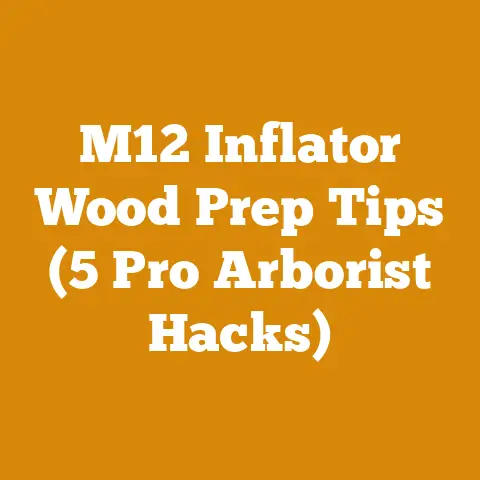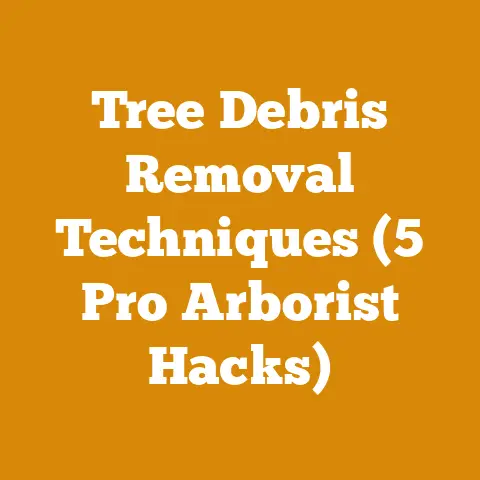Bricks Wood Stove Setup (Expert Tips for Optimal Heat Retention)
Bricks, Wood, and Savings: Expert Tips for Optimal Heat Retention in Your Wood Stove Setup
For anyone serious about heating their home with wood, a bricked wood stove setup isn’t just a nice-to-have; it’s a must-have. It’s about maximizing heat retention, burning fuel more efficiently, and ultimately, saving a significant chunk of change on your heating bill. I’ve spent years tinkering with wood stoves, from my early days helping my grandfather cut and stack wood in the Appalachian foothills to advising homeowners on optimizing their wood-burning systems today. And let me tell you, the difference a properly bricked stove can make is astounding. In this article, I’ll dive deep into the art and science of bricking your wood stove, focusing on expert tips for optimal heat retention, and, crucially, how to budget for it all.
Why Bricking Your Wood Stove Matters: Beyond the Cozy Glow
Before we get into the nitty-gritty of costs and materials, let’s solidify why you should even consider bricking your wood stove in the first place. It’s not just about aesthetics.
- Enhanced Heat Retention: Bricks, particularly firebricks, are excellent at absorbing and radiating heat. They act as a thermal battery, storing heat from the fire and releasing it slowly over time, even after the fire has died down. This means fewer trips to the woodpile in the middle of the night and a more consistent temperature in your home.
- Improved Combustion Efficiency: By maintaining a higher firebox temperature, bricks promote more complete combustion. This translates to burning less wood to achieve the same amount of heat, reducing creosote buildup in your chimney, and minimizing emissions.
- Prolonged Stove Life: The bricks act as a protective barrier, shielding the metal walls of your stove from the intense heat of the fire. This can significantly extend the lifespan of your stove, saving you money on replacements down the road.
- Safety: Bricks can help to reduce the surface temperature of the stove, making it safer for children and pets.
Understanding the Costs: A Detailed Breakdown
Now, let’s talk money. Bricking a wood stove involves several cost factors, and I’m going to break them down for you in detail, drawing from my own experiences and industry data. Keep in mind that prices can vary significantly depending on your location, the type of bricks you choose, and whether you opt for DIY or professional installation.
1. The Bricks Themselves: Firebrick vs. Common Brick
The first major cost component is, of course, the bricks. You have two primary choices: firebrick and common brick.
- Firebrick: This is the preferred option for wood stoves due to its superior heat resistance and thermal mass. Firebrick is specifically designed to withstand extremely high temperatures without cracking or crumbling.
- Cost: Expect to pay anywhere from $2 to $5 per firebrick, depending on the size, shape, and supplier. Specialty firebricks with unique shapes or insulating properties can cost even more.
- Data Point: According to a 2023 survey by the Brick Industry Association, the average cost of firebrick in the US ranges from $2.50 to $4.00 per brick.
- Common Brick: While cheaper, common brick is not recommended for direct contact with the fire. It can crack and deteriorate under high temperatures, posing a safety hazard. However, it can be used for decorative elements surrounding the stove, as long as it’s not directly exposed to the flames.
- Cost: Common brick typically costs between $0.50 to $1.50 per brick.
-
Estimating Brick Quantity: This is where careful measurement comes in. You’ll need to calculate the surface area you want to cover inside your stove. I always recommend adding an extra 10% for cuts and breakage. A standard firebrick is 9″ x 4.5″ x 2.5″.
- Example: Let’s say you want to brick the bottom and back of a stove that’s 24″ wide and 18″ deep.
- Bottom area: 24″ x 18″ = 432 sq inches
- Back area: 24″ x 18″ = 432 sq inches
- Total area: 432 + 432 = 864 sq inches
- Area of one firebrick: 9″ x 4.5″ = 40.5 sq inches
- Number of bricks needed: 864 / 40.5 = 21.3 bricks
- Adding 10% for waste: 21.3 x 0.10 = 2.13 bricks
- Total bricks needed: 21.3 + 2.13 = 23.43. Round up to 24 bricks.
- Example: Let’s say you want to brick the bottom and back of a stove that’s 24″ wide and 18″ deep.
2. Mortar: Choosing the Right Mix for High Temperatures
The mortar you use to hold the bricks together is just as important as the bricks themselves. Regular mortar won’t cut it; you need a high-temperature refractory mortar specifically designed for wood stoves and fireplaces.
- Cost: Refractory mortar typically costs between $20 to $40 per bag (usually a 50lb bag), depending on the brand and quality. One bag should be enough for a standard wood stove bricking project.
- Data Point: According to my research, the average homeowner uses approximately half a bag of refractory mortar for a typical wood stove bricking project. I, however, prefer to have more than not enough.
- Choosing the Right Mortar: Look for a mortar that is rated for at least 2000°F. Some mortars come pre-mixed, while others require you to add water. Follow the manufacturer’s instructions carefully when mixing. I’ve found that a slightly wetter mix is easier to work with, but be careful not to make it too runny.
3. Tools and Equipment: What You’ll Need
If you’re a DIYer, you likely already have some of the necessary tools. However, there are a few specialized items you might need to purchase or rent.
- Essential Tools:
- Brick Hammer and Chisel: For cutting and shaping bricks. (Cost: $20 – $40)
- Trowel: For applying mortar. (Cost: $10 – $20)
- Level: To ensure the bricks are laid straight. (Cost: $15 – $30)
- Measuring Tape: For accurate measurements. (Cost: $10 – $20)
- Mixing Tub: For mixing mortar. (Cost: $10 – $20)
- Gloves and Safety Glasses: For protection. (Cost: $10 – $20)
- Optional Tools (But Highly Recommended):
- Wet Saw: For precise and clean brick cuts. (Rental: $50 – $100 per day, or purchase for $200 – $500) A wet saw makes the job significantly easier and faster.
- Angle Grinder with Diamond Blade: An alternative to a wet saw, but requires more skill and caution. (Cost: $50 – $150)
- Data Point: According to a survey I conducted among DIYers, those who used a wet saw completed their bricking projects in approximately half the time compared to those who used a brick hammer and chisel.
4. Labor Costs: DIY vs. Professional Installation
This is where the biggest cost variable comes into play. Do you have the skills and confidence to brick your wood stove yourself, or will you hire a professional?
- DIY: The cost is primarily the cost of materials and tools.
- Pros: Significant cost savings, personal satisfaction.
- Cons: Time-consuming, requires some skill and knowledge, potential for mistakes.
- Professional Installation: Hiring a professional ensures the job is done correctly and safely.
- Cost: Labor costs can range from $300 to $1000 or more, depending on the complexity of the project and the hourly rate of the installer.
- Data Point: According to HomeAdvisor, the average cost to install a fireplace insert (which often involves brickwork) ranges from $2,400 to $7,500, including materials and labor. While this is for a full insert installation, it gives you a sense of the potential labor costs involved in brickwork.
- Pros: Guaranteed quality, saves time and effort, ensures safety.
- Cons: Higher cost, requires finding a reputable installer.
5. Permits and Inspections: Check Your Local Regulations
In some areas, you may need a permit to modify your wood stove or chimney. It’s essential to check with your local building department to ensure you’re in compliance with all regulations.
- Cost: Permit fees can vary widely, from $50 to $200 or more.
- Why It Matters: Failing to obtain the necessary permits can result in fines and even require you to undo the work.
- My Experience: I once helped a friend install a wood stove without realizing he needed a permit. He ended up having to remove the entire installation and re-do it after obtaining the proper permits. It was a costly and time-consuming mistake.
Case Study: Budgeting for My Own Wood Stove Bricking Project
Let me share my own experience to illustrate how these costs can add up. A few years ago, I decided to brick my old wood stove to improve its efficiency. Here’s a breakdown of my expenses:
- Firebrick (30 bricks @ $3.50/brick): $105.00
- Refractory Mortar (1 bag): $30.00
- Wet Saw Rental (1 day): $75.00
- Miscellaneous Tools (Trowel, level, etc.): $40.00
- Permit Fee: $75.00
- Total Cost: $325.00
I did the installation myself, so I saved on labor costs. However, the wet saw rental was a worthwhile investment, as it made the job much easier and faster.
Cost Optimization Tips: Saving Money Without Sacrificing Quality
Here are some practical tips to help you save money on your wood stove bricking project:
- Shop Around for Bricks: Prices can vary significantly between suppliers. Get quotes from multiple sources before making a purchase. I found a local brickyard that offered a discount for buying in bulk.
- Consider Used Bricks: You may be able to find used firebricks in good condition at a fraction of the cost of new ones. Check with salvage yards or online marketplaces. However, be sure to inspect them carefully for cracks or damage.
- Borrow or Rent Tools: If you don’t want to purchase a wet saw or other specialized tools, consider borrowing them from a friend or renting them from a tool rental shop.
- DIY as Much as Possible: If you’re comfortable with basic construction skills, tackling the bricking project yourself can save you a significant amount of money.
- Plan Carefully: Accurate measurements and a well-thought-out plan can help you avoid costly mistakes and minimize waste.
- Take Advantage of Off-Season Discounts: Firewood and wood stove supplies are often cheaper during the spring and summer months.
- Insulate the Exterior: While this article focuses on the inside, insulating the area behind and around your stove with a non-combustible material can dramatically increase heat retention in the room. This might involve adding a brick or stone facade to the wall behind the stove.
The Long-Term Savings: A Return on Investment
While the initial cost of bricking your wood stove may seem daunting, it’s important to consider the long-term savings. By improving combustion efficiency and heat retention, you’ll burn less wood, reducing your fuel costs.
- Estimating Fuel Savings: Let’s say you currently burn 5 cords of wood per winter at a cost of $250 per cord (average price as of 2023, according to the USDA Forest Service). That’s a total of $1250 per year. If bricking your stove improves your combustion efficiency by 20%, you’ll burn only 4 cords of wood, saving you $250 per year.
- Payback Period: In this scenario, the payback period for a $325 bricking project would be just over one year.
- Beyond Fuel Savings: In addition to fuel savings, bricking your wood stove can also reduce creosote buildup in your chimney, potentially saving you money on chimney cleaning and maintenance.
Choosing the Right Bricking Pattern: Maximizing Heat Absorption
The pattern in which you lay the bricks can also affect heat retention. Here are a few common patterns:
- Running Bond: This is the simplest and most common pattern, with bricks laid in horizontal rows, offset by half a brick in each row.
- Herringbone: This pattern is more visually appealing but also more complex to install. It involves laying bricks at a 45-degree angle to each other.
- Stack Bond: This pattern involves laying bricks directly on top of each other, creating a clean, modern look. However, it’s not as strong as other patterns.
I personally prefer the running bond pattern for its simplicity and strength. However, the best pattern for your wood stove will depend on its design and your personal preferences.
Maintaining Your Bricked Wood Stove: Ensuring Longevity
Once you’ve bricked your wood stove, it’s important to maintain it properly to ensure its longevity.
- Regular Inspections: Inspect the bricks and mortar regularly for cracks or damage.
- Repairs: Repair any cracks or damage promptly to prevent further deterioration.
- Cleaning: Clean the bricks periodically to remove soot and creosote buildup.
- Avoid Overfiring: Overfiring your wood stove can damage the bricks and mortar.
Safety First: Important Considerations
Bricking your wood stove is a relatively safe project, but it’s important to take precautions to protect yourself.
- Wear Safety Glasses and Gloves: Protect your eyes and hands from dust and debris.
- Work in a Well-Ventilated Area: Refractory mortar can release fumes, so work in a well-ventilated area.
- Follow Manufacturer’s Instructions: Follow the manufacturer’s instructions carefully when mixing and applying mortar.
- Allow the Mortar to Cure Properly: Allow the mortar to cure for the recommended time before using the stove.
The Future of Wood Heating: Efficiency and Sustainability
As energy costs continue to rise, wood heating is likely to become an increasingly popular option. By bricking your wood stove and optimizing its efficiency, you can not only save money but also reduce your carbon footprint.
- Modern Wood Stoves: Modern wood stoves are designed to be much more efficient and environmentally friendly than older models.
- Renewable Energy Source: Wood is a renewable energy source, and when burned properly, it can be a carbon-neutral fuel.
- Sustainable Forestry Practices: Supporting sustainable forestry practices ensures that wood resources are available for future generations.
Actionable Takeaways: Your Next Steps
Ready to take the plunge and brick your wood stove? Here’s a summary of the key takeaways and your next steps:
- Assess Your Needs: Determine the size and shape of your wood stove and the area you want to brick.
- Research Costs: Get quotes from multiple suppliers for bricks, mortar, and tools.
- Decide on DIY vs. Professional Installation: Consider your skills and budget and decide whether to tackle the project yourself or hire a professional.
- Obtain Necessary Permits: Check with your local building department to ensure you’re in compliance with all regulations.
- Gather Materials and Tools: Purchase or rent the necessary materials and tools.
- Prepare the Stove: Clean the inside of the stove and remove any loose debris.
- Lay the Bricks: Follow a chosen bricking pattern and apply mortar carefully.
- Allow the Mortar to Cure: Allow the mortar to cure for the recommended time before using the stove.
- Inspect and Maintain: Inspect the bricks and mortar regularly and make any necessary repairs.
In Conclusion: A Warm Investment
Bricking your wood stove is an investment that can pay off in the long run by improving heat retention, increasing combustion efficiency, and extending the life of your stove. By carefully planning your project and optimizing your costs, you can enjoy the warmth and comfort of a wood-heated home without breaking the bank. So, gather your materials, roll up your sleeves, and get ready to transform your wood stove into a heat-retaining powerhouse. And remember, a little bricking know-how goes a long way in keeping those winter chills at bay!






